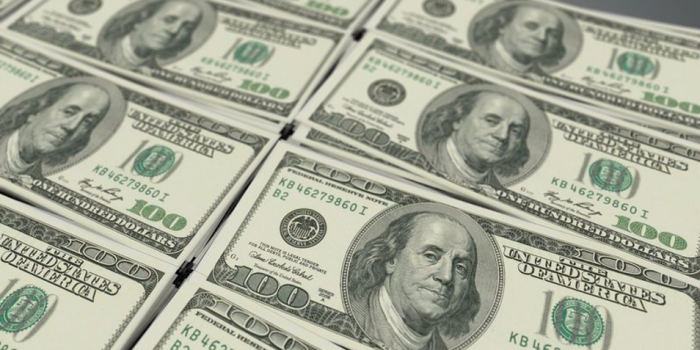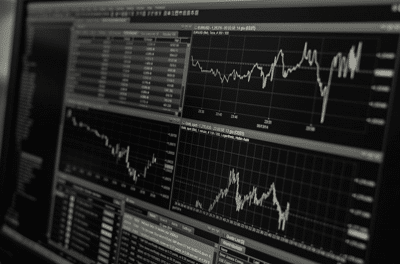
Financial markets never respond well to uncertainty, so the coronavirus outbreak has naturally had a dramatic impact on the world economy. Modern financial systems have never had to respond to a pandemic of this scale, so this is uncharted territory for both consumers and businesses. While economic issues pale into insignificance when compared with the threat to human life posed by coronavirus, the outbreak is certain to have significant lasting consequences on the American financial system.
The COVID-19 pandemic is set to rob many people of their jobs, which provides a long-term threat to the financial stability of the everyday consumer, while the spending of the average American citizen is inevitably tied to the fortunes of the US dollar. While healthcare has rightly become the primary concern for both individuals and states, it is natural that Americans are concerned about how fluctuations in the value of the dollar may shape their economic future.
The dollar in the early days of the novel coronavirus
Prior to recent developments, the US dollar (USD) had been enjoying a prolonged period of strength. The world’s leading reserve currency remained resilient throughout the US-China trade conflict, although there were expectations that a productive resolution to the dispute would inevitably cause the dollar to weaken. That would have boosted the Chinese economy and consequently given emerging nations across the world more scope for growth, but matters of trade have taken a backseat during the outbreak.
As coronavirus traveled from China into Europe, an increasing number of traders looked to the US dollar as a dependable investment option. With nations in the Eurozone, particularly Italy, immediately vulnerable to the spread of the virus, the USD made considerable gains on the euro (EUR). By mid-February, the USD was trading at around €0.92, its highest level since April 2017. While there had been minor fluctuations throughout the period, this was the culmination of the USD on an upward trajectory against the dollar since April 2018.
However, the USD experienced much sharper fluctuations in value as the virus spread farther. On 21 February, the USD was trading at €0.92696. On 9 March, it had plummeted to €0.87346. By 20 March, the USD was back at a healthier €0.93259. So many dramatic shifts in a short period of time are not normal, but these are not normal times. This has created a unique challenge for retail traders who usually thrive on analyzing volatility in foreign exchange markets.
Forex brokers USA understand the importance of the US retail trading market and will continue to provide the same regulated services throughout the outbreak, but traders may consider it wise to change the way they use such services. Many forex traders buy and sell based on short-term fluctuations, but the coronavirus outbreak is provoking sharp and frequently unpredictable rises and falls in currency values. With that in mind, investors may prefer to consider forex options from their broker that are based on long-term speculations.

This allows traders to gauge the effectiveness of monetary policies put in place by the Fed and to determine how they think that these policies will impact on the dollar over the coming months. There is short-term prestige in having the world’s most stable currency, but the Fed may have to accept shedding some of the dollar’s value in order to protect the US economy.
How the Fed is handling the coronavirus crisis
Part of the dollar’s success is due to the American economy being less dependent on its exports than several other countries. The dollar index compares the currency against six others, with the USD gaining over 5% in a two-week period in March to reach its highest level since 2017. However, this has created a shortage of dollars for borrowing purposes in other locales, thereby restricting economic growth.
Multinational companies based in the US also lose out if the dollar is significantly stronger than other major currencies, as their goods will be more expensive and less attractive to buyers abroad. The Fed may therefore need to relinquish some of the dollar’s recent gains, which could be achieved through an increased number of dollar swaps with other nations’ central banks. While this may cause a decline in the value of the dollar, it may leave the American economy in a stronger position.
The Fed is also looking inwards to try and protect American citizens and domestic businesses, already committing to the reintroduction of funding mechanisms last deployed during the 2008 financial crisis. This move has been made with the intention of channeling credit directly to companies and households so that businesses and consumers can operate with as much normality as possible.
The US Congress has explored the viability of a “digital dollar,” which could be used to provide economic stimulus payments to American citizens. Again, this strategy would be deployed with the intention of keeping the US economy out of a recession, while protecting people as unemployment rises and business face the risk of collapse. The digital dollar is a radical solution but one that could be made necessary by the extended threat posed by the novel coronavirus.
Public sentiment is instrumental at driving market changes, and there is no doubt that a strong US dollar provides cause for optimism during a difficult time for the nation. Keeping that optimism high, whether through digital dollars or alternative stimulus packages, will be one of the Fed’s priorities. However, a weakening of the dollar may be required for the long-term benefit of both the national and global economy. Whatever strategy is chosen, the Fed will be seeking to create as much market stability as possible during the coming months.
Comments
Post a Comment
Tell us what you think